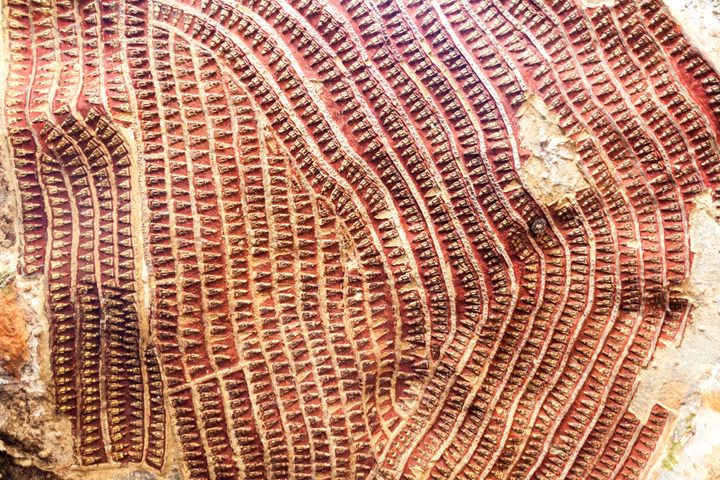
Myanmar’s Cave of Ten Thousand Buddhas Lives Up to Its Name
Centuries of devotion line the walls.
Near the hot and humid city of Hpa-An in Myanmar, in an ancient hillside cave, a constellation of sacred figures undulate, often in irregular rows, across every nook and cranny. They are Buddhas of different sizes, many made of terracotta a few inches tall. The shallow shelter also holds a 32-foot-tall Buddha and many others, in various standing, sitting, or reclining poses.
One common name of this archaeological pilgrimage site—also known as the Kawgoon or Kawgun Cave Temple—should come as no surprise: the Cave of the Ten Thousand Buddhas. Richard Carnac Temple, a British writer and amateur anthropologist, visited this kaleidoscope of devotion in 1894: “Everywhere on the floor, overhead, in the jutting points, and on the stalactite festoons on the roof, are crowded together images of Gaudama, the offerings of successive ages. Some are perfectly gilded, others incrusted with calcareous matter, some fallen, yet sound, others mouldered, others just erected. Some of these are of stupendous size, some not larger than one’s finger, and some of all the intermediate sizes; marble, stone, wood, brick, and clay … A ship of 500 tons could not carry away the half of them.” It’s good he didn’t follow that last thought to its logical conclusion.
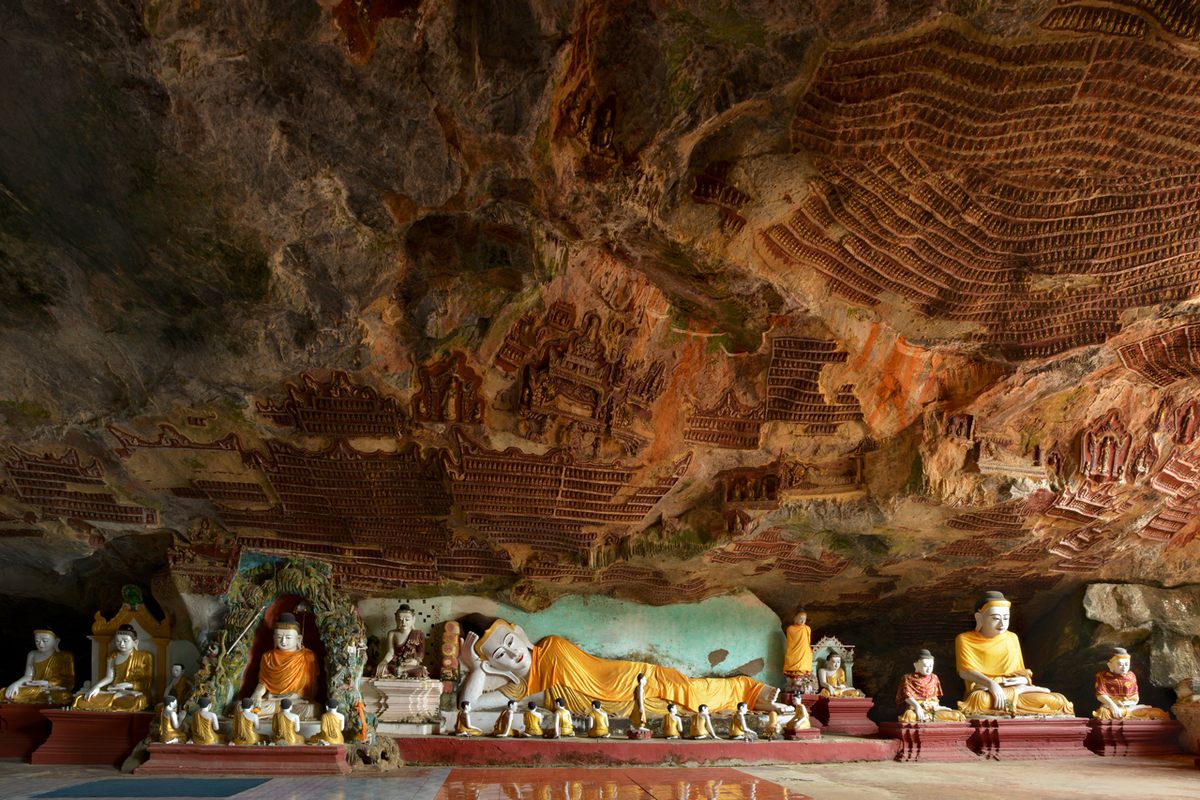
The origins of the cave temple are not clear, but historian Nai Maung Toe has speculated, on the basis of its inscriptions, that the site dates as far back as the 6th or 7th century. In the language of the Mon, a major ethnic group in Myanmar, they state that a Mon queen commissioned a Buddhist statue to be built at the site, where she had taken refuge during a war. Over the centuries, more statues and Buddhist art were added, the styles evolving, including the earthen votive tablets covering the cavern walls and adjoining limestone cliffs. These wall-lining votive tablets portraying the Buddha in intricate relief were mass-produced by pressing clay into molds and then baking them. They were commonly acquired by devoted pilgrims as mementos from religious sites, carried for their perceived power and protection, or presented as offerings at temples. In Kawgoon Cave, there are dozens of different styles of them, as newer versions replaced older ones that were lost, damaged, or stolen. (According to locals, during the violent years surrounding Myanmar’s independence, some collected the tablets to sell or keep as a protective amulets, particularly from gunfire.) Among the Buddhist statues, there are also examples of Hindu art, a reminder of the country’s religiously diverse history.
Significant restoration efforts began in 2007, and today the restored temple is graced with Buddha statues that look more modern. Pilgrims still make offerings to them, while tourists feed the macaques that climb along the rocks, and the eyes of thousands of tiny clay Buddhas watch them come and go.
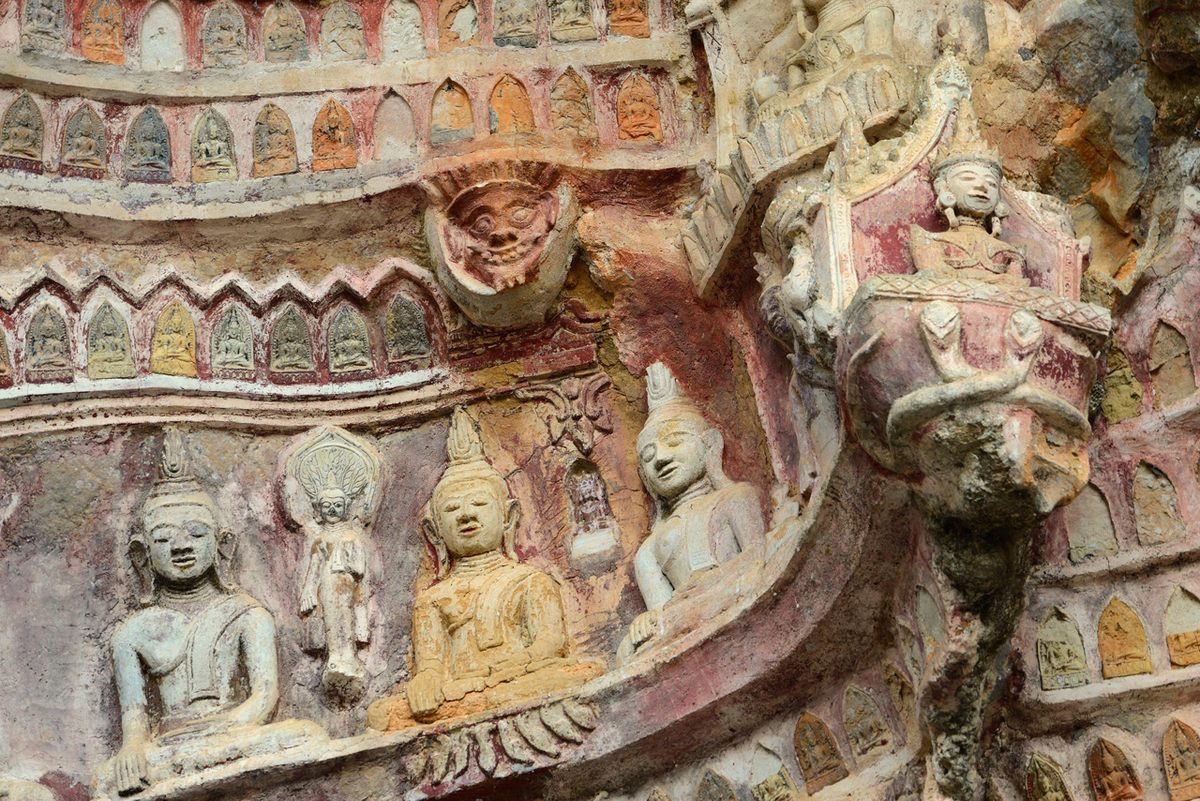


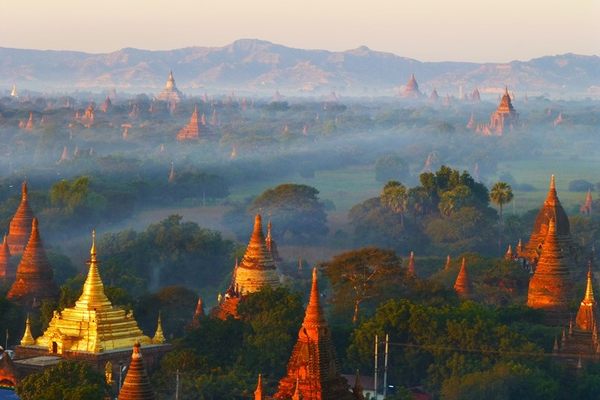

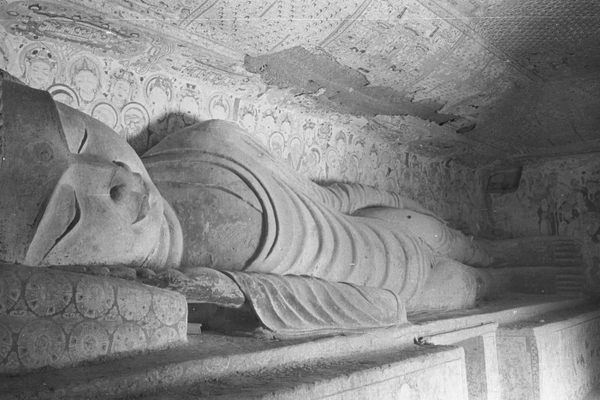
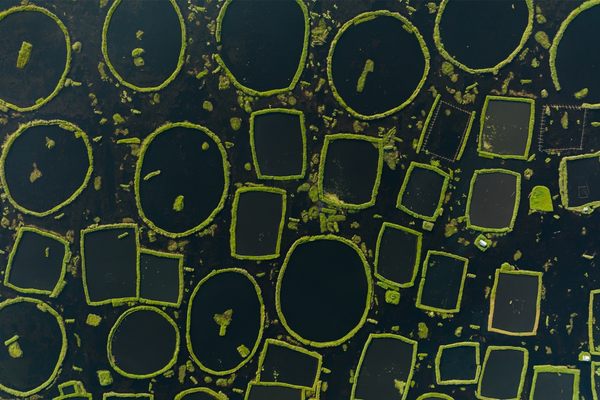
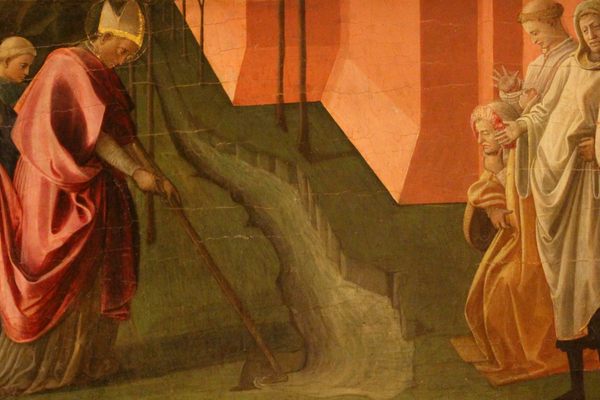

















Follow us on Twitter to get the latest on the world's hidden wonders.
Like us on Facebook to get the latest on the world's hidden wonders.
Follow us on Twitter Like us on Facebook